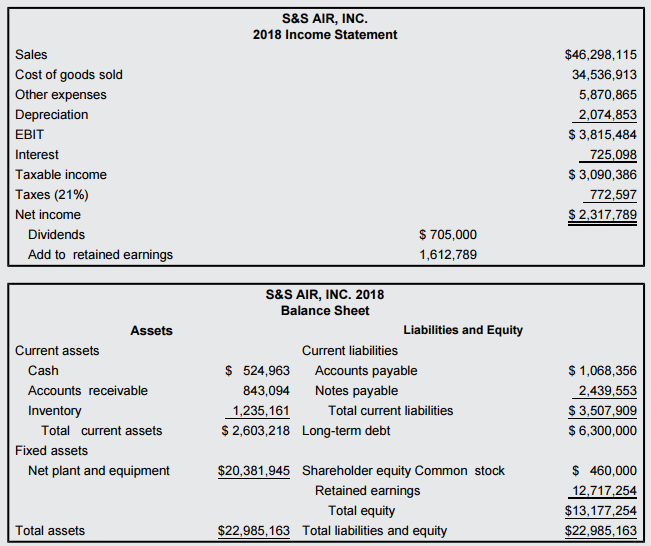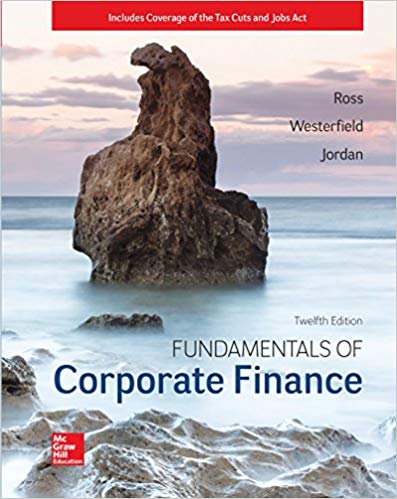1. Calculate the internal growth rate and sustainable growth rate for S&S Air. What do these numbers...
Question:
1. Calculate the internal growth rate and sustainable growth rate for S&S Air. What do these numbers mean?
2. S&S Air is planning for a growth rate of 12 percent next year. Calculate the EFN for the company assuming the company is operating at full capacity. Can the company’s sales increase at this growth rate?
3. Most assets can be increased as a percentage of sales. For instance, cash can be increased by any amount. However, fixed assets must be increased in specific amounts because it is impossible, as a practical matter, to buy part of a new plant or machine. In this case, a company has a “staircase” or “lumpy” fixed cost structure. Assume S&S Air is currently producing at 100 percent capacity. As a result, to increase production, the company must set up an entirely new line at a cost of $5,000,000. Calculate the new EFN with this assumption. What does this imply about capacity utilization for the company next year?
After Chris completed the ratio analysis for S&S Air (see Chapter 3), Mark and Todd approached him about planning for next year’s sales. The company had historically used little planning for investment needs. As a result, the company experienced some challenging times because of cash flow problems. The lack of planning resulted in missed sales, as well as periods when Mark and Todd were unable to draw salaries. To this end, they would like Chris to prepare a financial plan for the next year so the company can begin to address any outside investment requirements. The income statement and balance sheet are shown here:

"An internal growth rate (IGR) is the highest level of growth achievable for a business without obtaining outside financing, and a firm's maximum internal growth rate is the level of business operations that can continue to fund and grow the...
Step by Step Answer:

Fundamentals of Corporate Finance
ISBN: 978-1260153590
12th edition
Authors: Stephen M. Ross, Randolph W Westerfield, Robert R. Dockson, Bradford D Jordan





